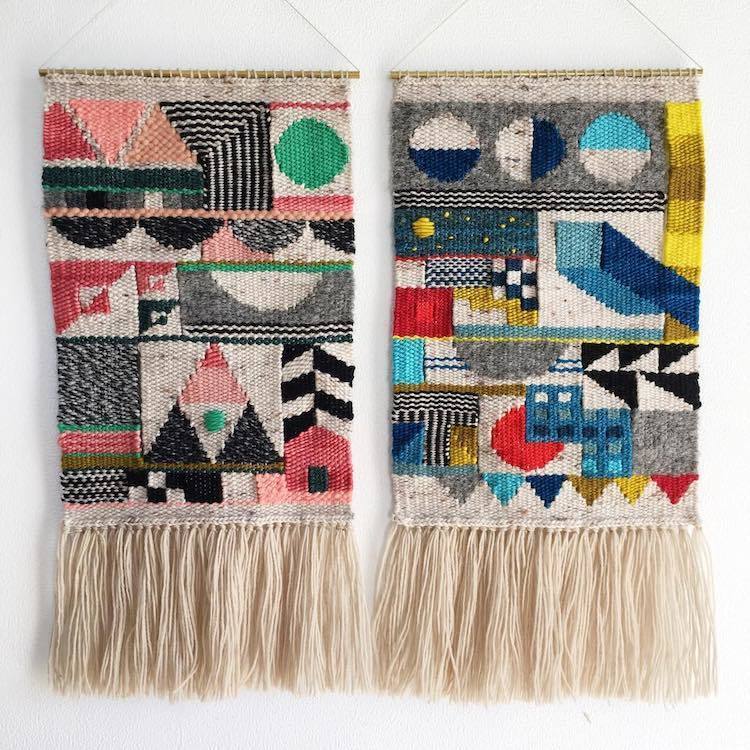Every day we are in touch with the art of textiles. From the clothes we buy or sew, to the various items with which we strive to decorate our homes. Such art can become both beautiful and useful. It was the latter property that was most often valued in history. But contemporary artists have completely changed their view of textiles.
Story
Textile is one of the most ancient forms of art created by human civilization. When making clothes, a person took into account not aesthetics of appearance, but practicality – for example, he created such clothes or a blanket so that they help to keep warm. This dates back to prehistoric times, and anthropologists believe that our ancestors learned to make robes from 100 to 500 thousand years ago. For this, various materials were used – from animal skins, fur to leaves and much more.
With the passage of time and the emergence of Neolithic cultures, textiles took on increasingly complex forms. Many early products were made using animal fibers. People learned how to spin threads, and clothes began to resemble what we put in this concept today.
The creation of textiles was a laborious process – everything had to be done manually. At first the fibers were collected, then twisted to turn into yarn. Making clothes was an expensive affair; tailors and seamstresses had to ensure that it would be more worn. Depending on how wealthy the customer was, they used imported fabrics and paints. Chinese silk came along the Great Silk Road, as well as goods from Africa, Asia, and India.
shop nowSave up to $30 on Flights
Mostly fabrics were used to make clothes, but aristocrats could afford the creation of magnificent tapestries and bright interior items.
The industrial revolution was a turning point for the textile industry. With the invention of the cotton ginning and spinning machines, as well as the mechanical loom, the fabrication became automated, they could be produced on a massive scale. Textiles were no longer the prerogative of the rich. Prices fell, textiles could afford most of the society. It also meant that creative people could experiment with textiles.
Modern artists create amazing works of art. For example, New Zealand artist Genevieve Griffiths incorporates weaving to create wall-inspired tapestries inspired by architecture.
Joana Vasconcelos, Anne Mondro, Toshiko Horiuchi Macadam create their delicate pieces using crochet techniques. Toshiko’s sculptures inspire awe and force the viewer to become part of them.





Customer
Can you be more specific about the content of your article? After reading it, I still have some doubts. Hope you can help me.
Customer
Your point of view caught my eye and was very interesting. Thanks. I have a question for you.
Customer
Your point of view caught my eye and was very interesting. Thanks. I have a question for you.
Customer
I don’t think the title of your article matches the content lol. Just kidding, mainly because I had some doubts after reading the article.
Customer
I don’t think the title of your article matches the content lol. Just kidding, mainly because I had some doubts after reading the article.
Customer
Can you be more specific about the content of your article? After reading it, I still have some doubts. Hope you can help me.
Customer
Thank you for your sharing. I am worried that I lack creative ideas. It is your article that makes me full of hope. Thank you. But, I have a question, can you help me?
Customer
Can you be more specific about the content of your article? After reading it, I still have some doubts. Hope you can help me.
Customer
Your article helped me a lot, is there any more related content? Thanks!
Customer
Thanks for sharing. I read many of your blog posts, cool, your blog is very good. https://www.binance.com/bn/register?ref=UM6SMJM3
Customer
Thanks for sharing. I read many of your blog posts, cool, your blog is very good.
Customer
I don’t think the title of your article matches the content lol. Just kidding, mainly because I had some doubts after reading the article.
Customer
Your point of view caught my eye and was very interesting. Thanks. I have a question for you.
Customer
I don’t think the title of your article matches the content lol. Just kidding, mainly because I had some doubts after reading the article.
Customer
Thanks for sharing. I read many of your blog posts, cool, your blog is very good.
Customer
Thank you for your sharing. I am worried that I lack creative ideas. It is your article that makes me full of hope. Thank you. But, I have a question, can you help me?
Customer
Your point of view caught my eye and was very interesting. Thanks. I have a question for you.
Customer
Your article helped me a lot, is there any more related content? Thanks!